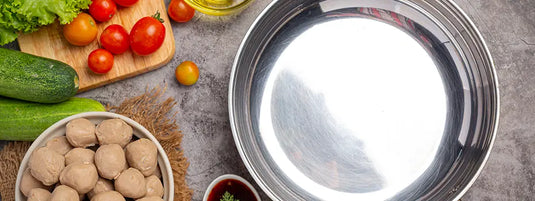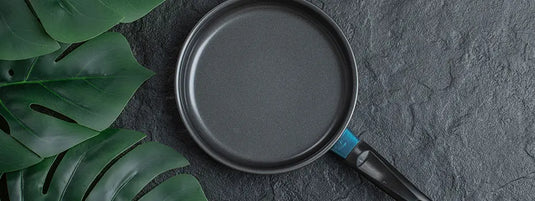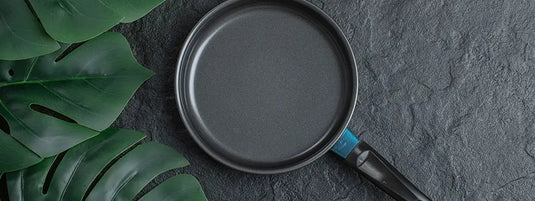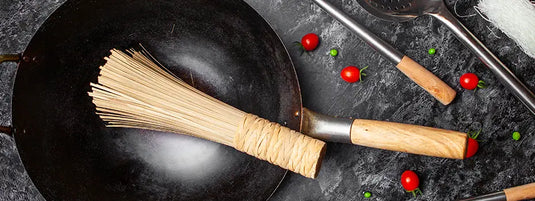Updated: · Kichera Editorial Team · Kichera
Reviewed by: Materials & Culinary Testing at Kichera
Quick Answer
For most Indian kitchens, 304 triply stainless steel (food-grade inner layer) is the best all-rounder. If we frequently cook highly acidic dishes (tomato/tamarind curries, rasam, pickling bases), 316/316L offers extra corrosion resistance thanks to molybdenum—great for long simmers and repeated acidic use.
- Everyday all-round use: 304 inner surface in triply is safe, non-reactive, and cost-efficient.
- Heavy acidic cooking / restaurant-style batches: Prefer 316/316L for the extra pitting & acid resistance.
- Buy triply only: Full-clad 3-ply spreads heat edge-to-edge for fewer hotspots and better browning.
Shop triply: Kichera Triply Stainless Steel
Triply Stainless Basics: 304 vs 316 (316L) at a Glance
Triply = three bonded layers: 304/316 inner (food-contact, non-reactive), aluminium core (even heat), and a magnetic outer (induction-ready). The inner layer is what touches food; that’s where the 304 vs 316 decision matters.
- 304 (18/8): Excellent corrosion resistance for daily cooking. Ideal for milk, tea, dals, sabzis, sautéing.
- 316/316L: Adds molybdenum for enhanced resistance in salty/acidic environments—handy for tomato/tamarind gravies or vinegar-based recipes simmered often.
Either way, we avoid fragile non-stick coatings—triply relies on material science, not chemicals.
304 vs 316 Triply: Which Fits Our Cooking?
| Factor | 304 Triply | 316/316L Triply | Winner for Health/Use |
|---|---|---|---|
| Reactivity with acidic foods | Very low; fine for typical tomato dishes | Ultra-low; best for frequent long acidic simmers | 316 for repeated acidic cooking |
| Heat distribution (triply) | Excellent (aluminium core) | Excellent (aluminium core) | Tie (both are triply) |
| Non-stick behavior | Pan-sear friendly with proper preheat + oil | Same technique; identical cooking feel | Tie |
| Price/value | More affordable | Usually pricier for the alloy | 304 for value |
| Best use-cases | Milk/tea, sabzi, dal, pulao, sautéing | Tomato/tamarind gravies, rasam, vinegar bases | Depends on our menu |
Best Triply Picks for Indian Kitchens
- All-round curry & tadka: Kichera Triply Stainless Steel Kadai with Lid — great for tomato-based gravies and deep frying.
- Quick sauté & searing: Kichera Triply Fry Pan with Lid — even browning with pan sauces.
- Milk/tea/soups: Triply Saucepan with Lid — ideal for daily boiling tasks; induction-ready.
Browse all sizes: Triply Stainless Steel Collection
Cooking Acidic Foods Safely (Tomato, Tamarind, Vinegar)
- For frequent acidic recipes, we can choose 316/316L triply for added peace of mind.
- Avoid dry-firing: bring oil/water to temp first, then add ingredients—this prevents scorching and off-flavors.
- Deglaze with water/stock after searing to release fond and make cleanup easier.
- For very long, salty boils (e.g., pickling), use gentle heat and avoid leaving food sitting overnight in the pan.
Related reads: Cast Iron vs Carbon Steel: Which Is Healthier? · Solid Ceramic vs Ceramic-Coated Safety · Safe Pan Temperatures & Oil Smoke Points
Make Stainless Behave Like Non-Stick (No Coatings)
- Preheat 1–2 minutes on medium → water-drop test beads → add oil → add food.
- Don’t overcrowd; let ingredients sear before turning to avoid sticking.
- For eggs/fish, use a touch more fat and slightly lower heat.
- If food sticks, deglaze and wipe; stubborn bits come off with a brief soak.
Care & Maintenance
- Soak briefly, then mild soap + soft scrub. Avoid salt on a cold, wet base to minimise pitting risk.
- Use wooden/silicone tools if we want to keep surfaces pristine (metal is okay on stainless, but avoid abusive scraping).
- Dry fully; store with lids off to prevent moisture rings.
FAQs
Is 316 stainless better than 304 for acidic Indian cooking?
Yes—316/316L adds molybdenum for enhanced acid/pitting resistance. For everyday use, 304 is excellent; for frequent long tomato/tamarind simmers, 316 is our top pick.
Does triply stainless leach metals?
Triply uses stable stainless on the food surface. With correct use (no harsh abrasives, reasonable heat), leaching is negligible compared with bare reactive metals.
304 vs 316 for health—what should we buy?
If we want value and versatility: 304. If we’re heavy on acidic gravies: 316/316L. Both are safe choices in triply construction.
Is triply stainless steel good for induction?
Yes. The magnetic outer layer makes our triply pans induction-ready while the aluminium core spreads heat evenly.
Build the knowledge cluster: Cast Iron vs Carbon Steel: Which Is Healthier? · Solid Ceramic vs Ceramic-Coated Safety · Safe Pan Temperatures & Oil Smoke Points · How to Season Cast Iron for Natural Non-Stick




